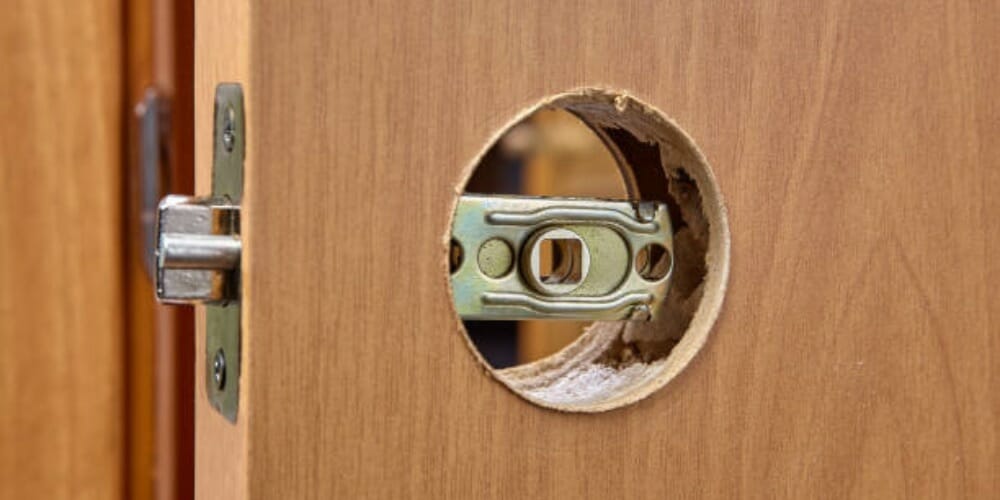Do you want to remove your door knob and shift it to another door? Or do you want to replace your door lock with a much smaller door lock or a keyless door lock? In that case, it will leave an unattractive hole in your door panel and a hole where the deadbolt used to be on the edge of the door. Fortunately, you can repair that door lock hole in many ways.
In general, there are many ways to fix or cover the hole in door locks, including:
- Wood fillers Dowel wood
- Dutchman wood repair
- Method combination approach
- Other Options (Door reinforcement plate and decorative hole covers)
In this handy guide, let me walk you through different ways to fix door lock holes.
Ways to Patch Up Door Lock Hole
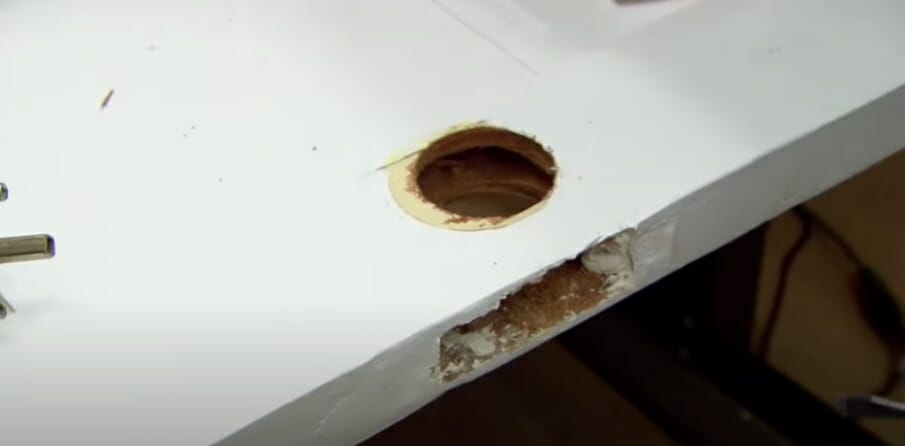
Repairing those holes will undoubtedly need extra effort. Here are the effective options for you:
Wood Fillers
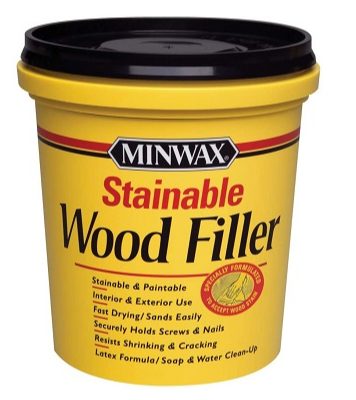
Wood fillers come in various sizes and wood styles. Depending on the hole’s size, you may get them in a stick, tube, 8 oz, or 16 oz container. Some are paintable or stainable, allowing you to customize the color of the filler to match the color of your door.
Wood fillers are effective for superficial repairs allowing you to fill the gap in your wooden door. However, a larger gap created by a lock cylinder necessitates a stronger filler. With that, it’s best to purchase fillers consisting of epoxy resin or polyester. They are among the most weather-resistant and robust fillers and are comparable to vehicle body fillers.
Now, since the hole is bigger, apply this in stages or batches to enable the filler to cover the door knob hole completely.
After that, test the door’s color first to determine if it suits your door. Otherwise, repaint the whole door.
Dowel Wood
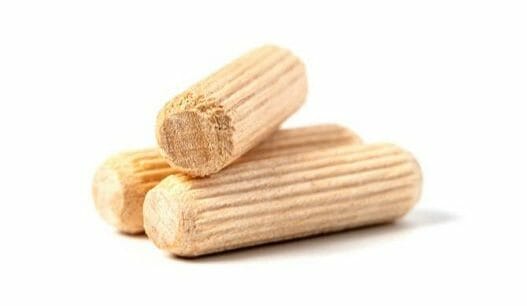
When it comes to longevity and structural integrity, nothing beats genuine wood when filling a massive door hole. A dowel with the appropriate diameter works nicely for the round hole in the door edge left by the door latch and strike plate bolts. A big dowel also makes a strong filler for your lock cylinder hole. However, you will undoubtedly need to repaint your door since the exposed end grain of the dowel will appear significantly different and stain considerably more profound than the surrounding wood.
Dutchman Wood Repair
This one will put your handyman abilities to the test. Although this is more difficult, it will yield a superior finish, particularly structural integrity, and hole cover longevity. Here are the steps:
Step 1: Remove the door from the door frame and position it on your working table.
Step 2: Create a template based on the size of the lock hole. But not a circle template. Instead, it will be a square that will cover the holes on the door’s outer side and edge.
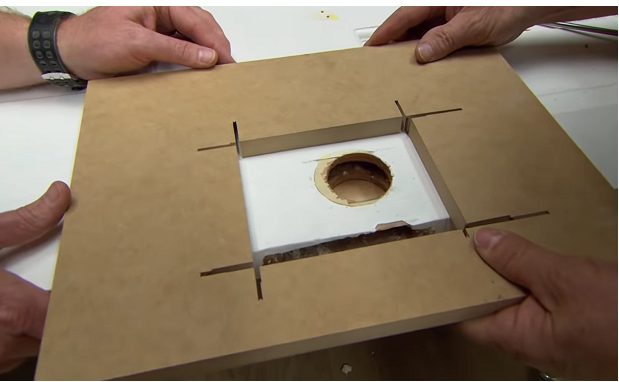
Step 3: Securely clamp the template to the side of the door. It will serve as a guide while you use the plunge router to cut a square part of the door.
Step 4: After that, sand the surface to smooth it out.
Step 5: Then, using the same pattern, cut a piece of wood that fits precisely in your square pit. The wood’s face grain should be revealed.
Step 6: Attach the Dutchman wood to the cavity with glue. Hammer it carefully to ensure adequate adhesion.
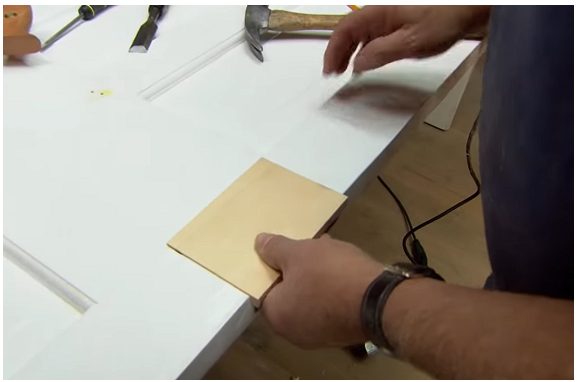
Step 7: Level the front and edge of the door with your hand plane.
Step 8: Pour glue along the borders of the wooden patch and fill it with sawdust to fill in any gaps.
Step 9: Repaint or stain the wood to match the color of your door.
Method Combination Approach
If your current door knob hole is too large for your new lock, a combination of those methods is required to fit your lock. Follow these procedures:
Step 1: You don’t have to remove the door from the door frame. Just install a locking device to keep it in place while working on it.
Step 2: Use sandpaper to smooth out the hole. If you have a wire brush on your drill, you can also accomplish this. (1)
Step 3: Glue the hardwood dowel with the appropriate size into the hole left by the door latch and strike plate bolts.
Step 4: Get your wood filler ready. It should be somewhat runny in consistency so that you may distribute it around the hole.
Step 5: Apply the wood filler with a paintbrush along the hole. Initially, you can apply a quarter-inch wood filler on the door surface.
Step 6: Check that the thickness is consistent throughout. Then, allow the wood filler to dry completely.
Step 7: Insert Dutchman wood with the correct size into the door lock hole.
Step 8: To cover the more durable but rougher area within, use a stainable and high-quality stainable wood filler or a glue and sawdust mixture.
Step 9: Using sandpaper, smooth the surface again.
Step 10: Apply stain or paint to complete the repair.
Other Options
If you’re not willing to go through patching up a hole in door locks with wood and fillers, there are easier alternatives to repair it, such as:
A Door Reinforcement Plate
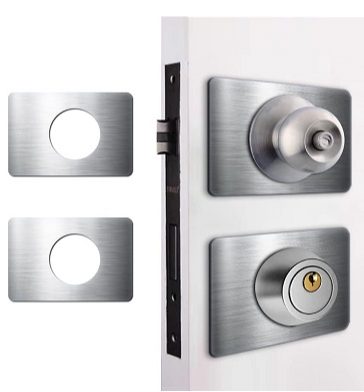
Door reinforcement plates are typically made of attractive metal like brass, nickel, or wrought iron. It can be part of your new locking mechanism or a separate fixture that mounts firmly in or over the door hole left by the original deadbolt. Although they stand out, most patches will as well, and a decorative reinforcing plate will most likely outlive the door. (2)
Decorative Hole Covers
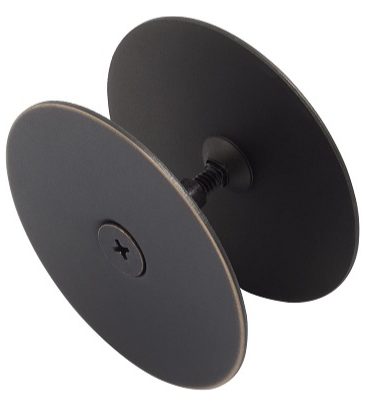
You can cover it with decorative hole covers available in any hardware shop. These door knobs are available in various finishes and sizes to fit your door. With only a few minutes, you’ll be able to hide those ugly holes. They also come with the necessary screws for immediate installation.
Take a look at some of our related articles below.
References
(1) sandpaper – https://www.britannica.com/technology/sandpaper
(2) wrought iron – https://www.sciencedirect.com/topics/engineering/wrought-iron
Video Reference

